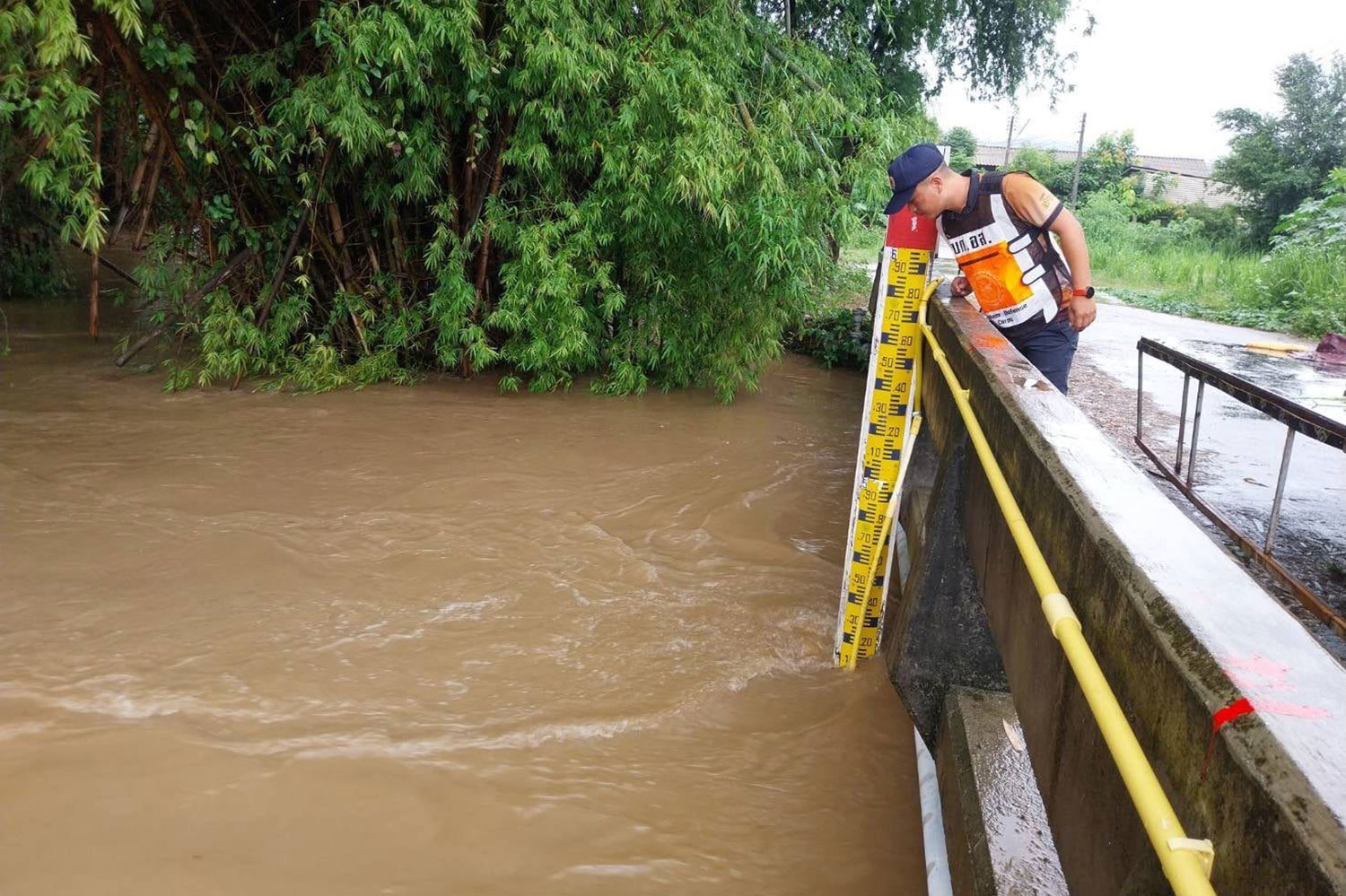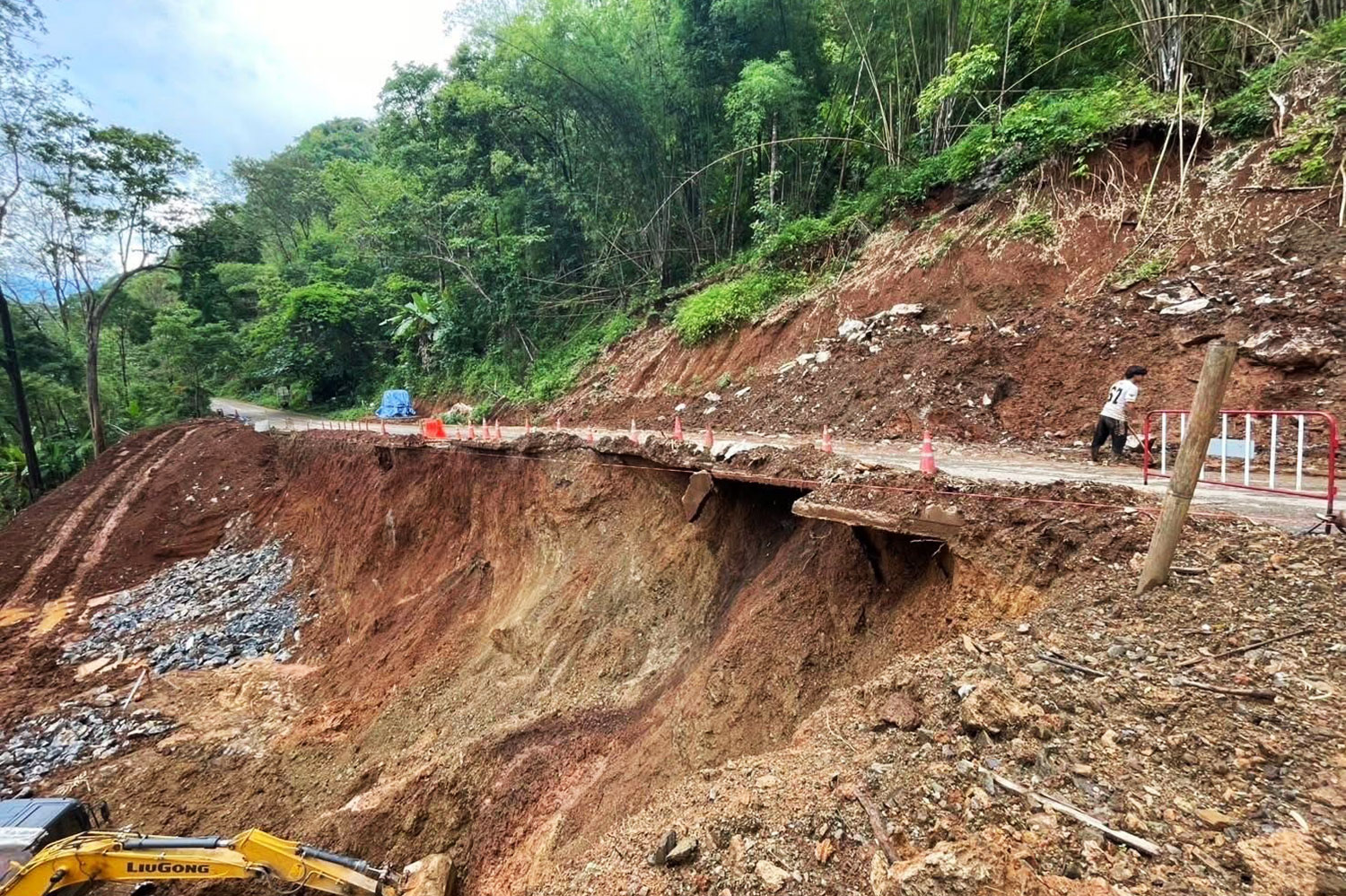CHIANG MAI– Persistent downpours have struck Chiang Mai again, causing landslides and sudden floods along the Mae Klang River in Chom Thong district. Since Monday night, water from Doi Inthanon, Thailand’s highest peak, has raced down into the river, pushing water levels to dangerous heights.
Emergency teams have helped residents evacuate, and many fear this could be a repeat of the disastrous floods that hit Chiang Mai in 2024. The province, still recovering from last year’s record floods, is once again facing nature’s force.
Early on Tuesday, 27 May, the Mae Klang River surged as runoff from Doi Inthanon and nearby canals, Mae Hoi and Mae Ya, gushed into it. By 7 a.m., the water at Ban Mae Klang in Ban Luang subdistrict reached 3.863 metres, close to the disaster mark of 4.5 metres, according to the Chiang Mai Provincial Public Relations Department.
The river has already spilled over its banks, flooding roads and houses. Village 4 in Ban Mae Klang has suffered the most. Residents had to evacuate quickly during the night, grabbing what they could as rescue workers and local officials helped them reach safety.
The lush slopes of Doi Inthanon are usually a draw for visitors, but heavy rain has turned its streams into destructive torrents. Rainfall has poured down at high rates, causing the mountain’s watercourses to swell and flood the riverbanks.
The scene brings back memories of October 2024, when the Ping River reached 5.3 metres and Chiang Mai’s city centre flooded, including famous markets like Warorot and Muang Mai.
Homes, shops, and lives were upended. Many locals are still haunted by that experience. “Last year, we lost so much,” said Somchai Rattanakorn, a local shopkeeper. “The water rose so fast. Now we’re watching it again, and it’s scary every rainy season.”
Another setback hit Chiang Dao district, where a landslide, triggered by steady rain, destroyed a road near the Chao Pho Luang Lham Daeng Shrine in Mae Na subdistrict. The road leads to Muang Khong village and is now blocked by debris, cutting off communities and disrupting travel. Crews have been sent to clear the area, but steady rain makes progress slow.
Officials are warning drivers to check routes and stay safe before travelling through the region. “The road is essential for Muang Khong village,” said Prawit Srisuk, a local official. “We’re working as fast as possible, but the rain is making it tough.”
This crisis highlights how exposed the region is to severe weather, which is getting worse. The 2024 flood, worsened by Typhoon Yagi and shifting weather patterns, was one of Chiang Mai’s worst, hitting thousands of families and causing damage worth billions of baht.
When the Ping River overflowed last October, major business areas went underwater, hospitals closed, and trains stopped running. Landslides in the Mae Ai district also claimed lives and left towns struggling. Now, with the Mae Klang River rising and landslides returning, people are bracing for another long recovery.
Authorities are acting fast. The Chiang Mai Provincial Disaster Prevention and Mitigation Office has sent staff and equipment to help drain water and clear debris. Pumps are running nonstop in low-lying areas, and emergency shelters are ready for displaced families.
Rescue teams in Ban Mae Klang have won praise for moving families to safe ground as waters climbed. But with more rain in the forecast, officials warn everyone to stay alert. “We’re not safe yet,” said a spokesperson. “Water levels keep rising, and we’re watching the situation closely.”
The impact on the local economy is already clear. Chiang Mai, a top spot for tourism in Northern Thailand, depends on visitors coming to see its temples, lively markets, and natural sites like Doi Inthanon National Park.
While the park is still open, the floods and damaged roads could scare off tourists and threaten local businesses hoping to recover from last year’s setbacks. “Tourism keeps us going,” said Naree Phongchai, who runs a guesthouse in Chom Thong. “If people stop visiting because of floods, everyone suffers.”
The government has promised help, with nearly 20 billion baht set aside for recovery in Chiang Mai and nearby Chiang Rai after the 2024 floods. Plans to improve water management and prevent future floods are on the table, but many locals and experts say faster action is needed to handle weather disasters that keep getting worse.
“These floods are becoming common,” said Dr. Anong Phromchai, an environmental researcher. “We need systems that can cope with these events, not just patch things up for now.”
As Chiang Mai faces another emergency, the people’s strength stands out. Volunteers, officials, and even elephants have joined in to bring supplies and help families in need.
















